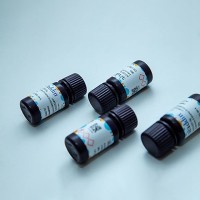In Situ Hybridization with Isotopic Riboprobes for Detection of Striatal Neuropeptide mRNA Expression After Dopamine Stimulant Administration
互联网
262
Stimulant drugs such as cocaine, amphetamine, and methylphenidate induce their primary pharmacological actions through elevation of dopamine levels in the brain. The most dense innervation of dopamine nerve terminals in the central nervous system (CNS) is found within the striatum (caudate nucleus, putamen, and nucleus accumbens) (1 ). This brain region is central to the wide range of actions of psychostimulant drugs on motor behavior, cognition, motivation, and reward and is intricately linked with mesocorticolimbic structures, also innervated by dopamine, such as the amygdaloid complex and prefrontal cortex. The neuroanatomical organization and regulation of the striatal dopaminergic system as well as its relevance to motor function and drug reinforcement have been well studied. Elevation of striatal dopamine levels as a consequence of psychostimulant drug administration leads to activation of distinct dopamine receptor subtypes (D1 –D3 ) that are differentially expressed within distinct striatal neuronal populations. The predominant striatal cells are medium spiny projection neurons (70–80%) and medium aspiny interneurons (20–25%) that all contain the inhibitory neurotransmitter γ-aminobutyric acid (GABA), but contain different neuropeptides. A major focus in regard to stimulant effects in the striatum has been directed toward the medium spiny neurons that not only have distinct neuropeptidergic content, but also discrete efferent anatomical connectivity.









